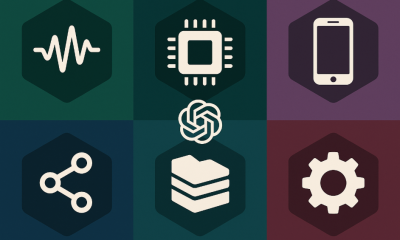Artificial Intelligence
AI Based on Slow Brain Dynamics

Scientists at Bar-llan University in Israel have used advanced experiments on neural cultures and large scale simulations to create a new ultrafast artificial intelligence. The new AI is based on the slow brain dynamics of humans. Those brain dynamics have better learning rates compared to the best learning algorithms that we have today.
Machine learning is actually strongly related and based on the dynamics of our brains. With the speed of modern computers and their large data sets, we have been able to create deep learning algorithms that are similar to human experts in various different fields. However, these learning algorithms have different characteristics than human brains.
The team of scientists at the university published their work in the journal Scientific Reports. They worked to connect neuroscience and advanced artificial intelligence algorithms, a field that has been abandoned for decades.
Professor Ido Kanter of Bar-llan University’s Department of Physics and Gonda (Goldschmied) Multidisciplinary Brain Research Study, and the leading author of the study, commented on the two fields.
“The current scientific and technological viewpoint is that neurobiology and machine learning are two distinct disciplines that advance independently,” he said. “The absence of expectedly reciprocal influence is puzzling.”
“The number of neurons in a brain is less than the number of bits in a typical disc size of modern personal computers, and the computational speed of the brain is like the second hand on a clock, even slower than the first computer invented over 70 years ago,” he said.
“In addition, the brain’s learning rules are very complicated and remote from the principles of learning steps in current artificial intelligence algorithms.”
Professor Kanter works with a research team including Herut Uzan, Shira Sardi, Amir Goldental, and Roni Vardi.
When it comes to brain dynamics, they deal with asynchronous inputs since physical reality changes and develops. Because of this, there is no synchronization for the nerve cells. This is different with artificial intelligence algorithms since they are based on synchronous inputs. Different inputs within the same frame and their timings are normally ignored.
Professor Kanter went on to explain this dynamic.
“When looking ahead one immediately observes a frame with multiple objects. For instance, while driving one observes cars, pedestrian crossings, and road signs, and can easily identify their temporal ordering and relative positions,” he said. “Biological hardware (learning rules) is designed to deal with asynchronous inputs and refine their relative information.”
One of the points that this study makes is that ultrafast learning rates are about the same whether it’s a small or large network. According to the researchers, “the disadvantage of the complicated brain’s learning scheme is actually an advantage.”
The study also shows that learning is able to take place without learning steps. It can be achieved through self-adaptation based on asynchronous inputs. In the human brain, this type of learning happens in the dendrites, which are short extensions of nerve cells, and different terminals of each neuron. This has been observed before. Previously, it was believed to be unimportant that network dynamics under dendeitic learning are controlled by weak weights.
This new research and findings can mean a lot of different things. These efficient deep learning algorithms and their similarity to the very slow brain’s dynamics can help create a new class of advanced artificial intelligence with fast computers.
The study also pushes for cooperation between the fields of neurobiology and artificial intelligence, which can help both fields advance further. According to the research group, “Insights of fundamental principles of our brain have to be once again at the center of future artificial intelligence.”











